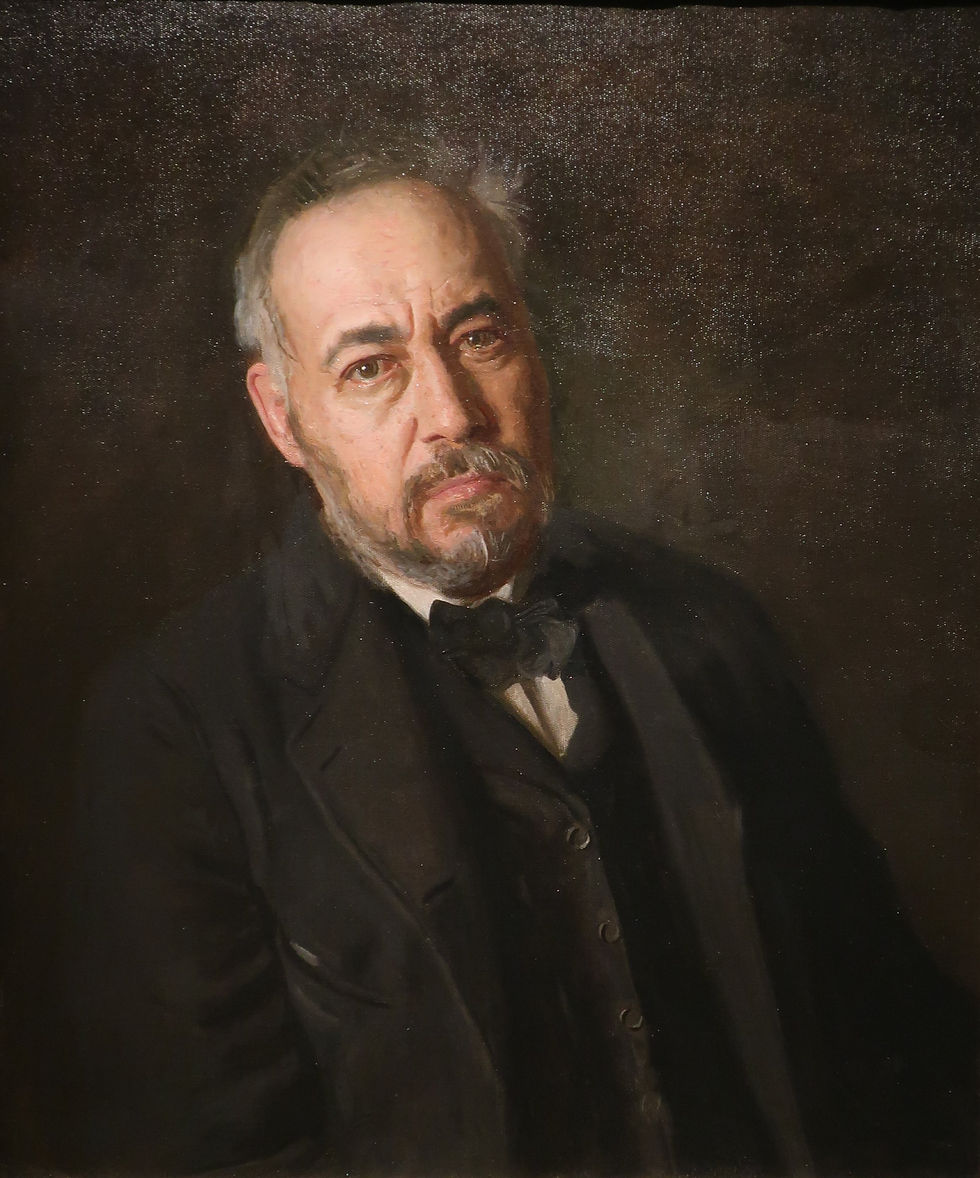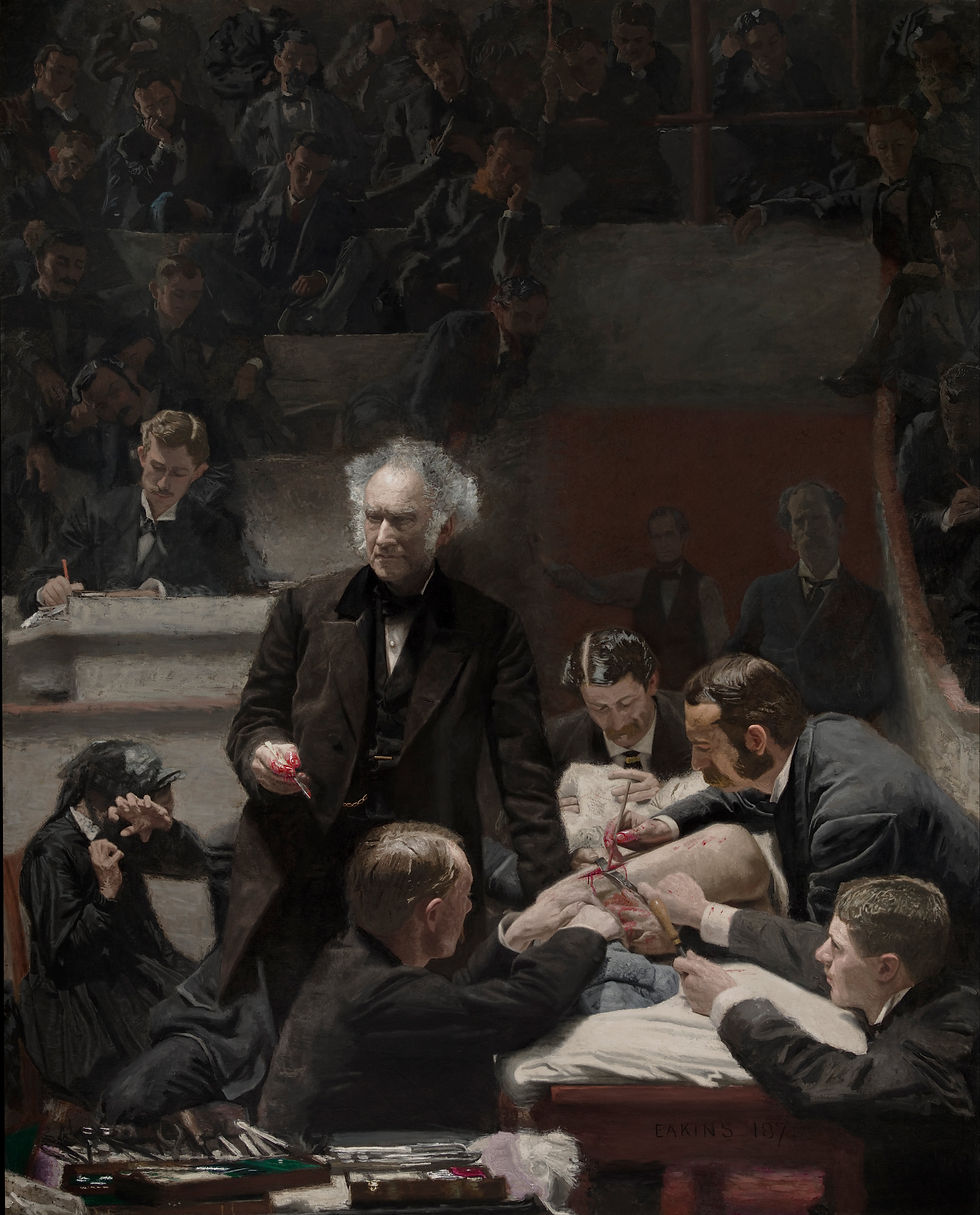The real deal
- James Tyler
- Jul 6, 2023
- 3 min read
Updated: Jul 16, 2023
Can a painting be so realistic as to be repulsive? Maybe today we’re so inured to gruesome images as entertainment (thanks, “CSI!”) that a depiction of a surgery isn’t that big a deal. That wasn’t the case back in 1875 when Thomas Eakins produced “The Gross Clinic.”

Thomas Cowperthwait Eakins was a painter, photographer and sculptor from Philadelphia and was a master of Realism, probably one of America’s greatest in that artistic form. He had graduated from the Pennsylvania Academy of Fine Arts in 1866 and had also studied in Paris.
So in 1875 Eakins creates a painting he hopes will be featured in Philadelphia’s Centennial International Exhibition of 1876. But, alas, his work was a bit too true to life for the art lovers of his day.
“The Gross Clinic” you see happens to feature Philadelphia trauma surgeon Dr. Samuel Gross performing surgery with his students in the Jefferson Medical College’s surgical amphitheater.

Maybe if Eakins had been skilled in Impressionism, he may have landed a spot in the exposition, but his entry is a master work of scientific realism.
And big, too. It measures 8 feet by 6.5 feet, which may have added some oomph to its squeamish impact.
Dr. Gross isn’t just lecturing to his students. He’s holding a scalpel in one bloodied hand while his patient lies sprawled on a table with a gaping incision in his thigh while Gross’ surgical team perform various surgical tasks, including one member holding a chloroform cloth over the patient’s face.

It’s a powerful image that Eakins produced, made even more emotionally charged because behind the doctor, shielding her eyes from the dramatic scene of the surgery, is a woman, perhaps the patient’s mother.
Eakins didn’t just summon the painting up from his imagination. He had seen Gross treat a young man who was suffering from an infection of his femur. Eakins had attended a number of surgical lectures at the clinic and had made various sketches.
Surgery was quickly advancing then, so instead of the usual treatment – amputation – Gross operated more conservatively on the teenager. Eakins’s painting – thanks to his unsparing realism – is a time capsule for better understanding surgical procedures in the nineteenth century.
And Philadelphia back then was one of the top spots for surgical education. But this was late 19th century, so even though anesthesia allowed longer operations, none of the surgeons are wearing masks, gloves or gowns in Eakins’ painting.

That would come later when he returned to surgery as a theme in 1889 with “The Agnew Clinic,” which looks a wee bit more like a surgical theater of today, thanks to a better understanding by then of bacteria and infection.
Still no masks or gloves in the later painting, but white gowns and coats are worn, and there’s a professional nurse on hand at least.
“The Gross Clinic” may not have been accepted for the centennial exposition, but it was instead displayed in Ward One at the U.S. Army Post Hospital until it was acquired by Jefferson Medical College in 1878. Now the painting is shuttled between the Philadelphia Museum of Art and the Pennsylvania Academy of Fine Arts every three years for exhibition.

Eakins’ painting has been lauded for its style of “scientific realism,” but it’s not really a snapshot of Dr. Gross’ radical surgical procedure.
After all, Eakins included himself in the portrait as one of the observers, off on the right side making a sketch.
“The Gross Clinic” is an artistically crafted image designed to lionize the renowned lecturer and portray a real medical treatment of that time.
It may have been too upsetting for viewers in 1876, and it’s still a powerful image to see today –especially when you contemplate the medical advances made in the past nearly 150 years since Eakins took us inside the Gross clinic.
Without that progress, I think I’d react like the mom in the painting.
Thomas Eakins, American - Portrait of Dr. Samuel D. Gross (The Gross Clinic)



コメント